‘People Are Way Too Scared About Engaging’
Editors Seeking to Reinvent Diversity Survey

‘People Are Way Too Scared About Engaging’
“Unfortunately, I’ve even heard people say, when they look at photos, ‘This person looks too happy. Are you sure they’re homeless?'” said Nikita Stewart, a new author who covers homelessness for the New York Times. “It’s like WHAT? What are you talking about? . . . It really bothers me when I’m reading stories and there’s not one smile, because I know that’s not true. I know it’s not true.”
Chris Arnade, who wrote a book about the seven years he spent living with homeless people, used to be a banker.
“There’s this really nasty belief among what I call the libertarian wing that the people who are rich deserve to be rich because they’re better than other people,” he said.
“And so when you don’t look at [the] homeless and you don’t listen to them, that’s an easier story and narrative to believe. Once you actually start hearing their stories, you have to grapple with the reality that maybe you’re rich not because you’re talented or more talented or more valid as a person; maybe [it’s] because of the situation you grew up in, or because of luck. So I think there are a lot of reasons why people don’t want to humanize the poor or the homeless.”
Nichelle Smith, coordinating editor for the USA Today investigations/enterprise team, says she looks around her newsroom and sees that it’s “more and more the domain of people who already have — and who can take — the luxury of taking a couple of years to be a reporter before going on to do other things.”
Recently, Smith’s colleagues were discussing a story from another Gannett newspaper about the inconvenience of having a car that wouldn’t start because the coronavirus restrictions meant its housebound owner wasn’t using it.

“Maybe I’m jaded, because I went to Africa last year and saw that maybe standing in line is just a normal way of life there, and what day are you going to have water, and what day are you going to have electricity becomes an actual thing, so for journalists here, and I include myself as a person who lives in the inner suburbs, for us to be writing about forgetting how to drive or ‘oh my God, there’s a shortage of top sirloin, I’m going to have to settle for stew meat,’ get a perspective, get real, OK?”
The discussion took place Sunday by Zoom at the Journal-isms Roundtable, a monthly event affiliated with Journal-isms. Twenty-seven people, most of them journalists and some with a specific interest in homeless people, took part.
You can watch it here:
“Over half a million people go homeless on a single night in the United States,” [PDF] according to the White House Council on Economic Advisers.
“Approximately 65 percent are found in homeless shelters, and the other 35 percent —- just under 200,000 -— are found unsheltered on our streets (in places not intended for human habitation, such as sidewalks, parks, cars, or abandoned buildings). Homelessness almost always involves people facing desperate situations and extreme hardship.”
One study found that more than 78 percent of those experiencing homelessness are people of color. Nearly 65 percent of them are black.
Sheila White, a writer, photographer, college student and advocate in her capacity at Street Sense Media, a Washington, D.C., newspaper for homeless people, just moved into her own place after seven years of homelessness.
“It’s hard out there, especially for a female. We already got one strike against us, we black,” she told the group. “They automatically think we crooks. You don’t even have to be homeless; they think you’re a crook just because you’re black. And that’s not the case.
“And we need to find a way to stop all these stereotypes of homelessness. . . . They portray us in the media as the bad guy. . . . Even with the movies our kids watch. I rarely watch TV now. It’s degrading, to me. I just know I just want to change what’s going on in this world. And by me being been homeless before, by being a photojournalist I think I can say a lot, and learn a lot.”
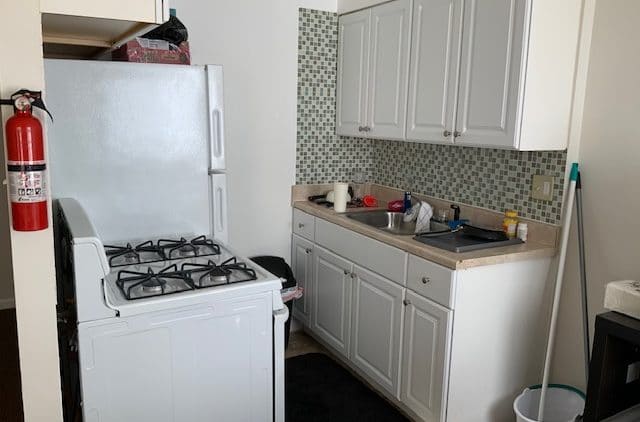
After seven years of homelessness, Sheila White has her own place, complete with kitchenette. She attended the roundtable with Eric Falquero, editorial director of Street Sense in Washington, D.C. (Credit: Sheila White)
“People are way too scared about engaging with homeless people,” said Arnade, author of the recently published “Dignity: Seeking Respect in Back Row America.”
“They have all these stereotypes. . . . That to me is what’s lacking. So often we act as a filter. . . . Obviously, when you’re homeless, you don’t have the resources to tell your stories. One of the things I’ve tried to do was use my resources to tell their stories and get myself out of the way.”
How are stories of homeless people otherwise being told?
In 2016, at the instigation of San Francisco Chronicle Editor in Chief Audrey Cooper, more than 70 Bay Area media organizations put out hundreds of stories on the homeless crisis in San Francisco. It was called the Media Homeless Project.
Sylvie Sturm, veteran print journalist from Canada and a graduate student in a San Francisco State University master’s program, analyzed those articles and columns.
“Basically, the takeaway for me was that, this homelessness blitz . . . what it did was kind of exhaust people,” Sturm told the group. “It made people even less empathetic because it didn’t create — it didn’t connect the humanity. It just perpetuated this us vs. them . . . kind of binary. Rather than using language that is inclusive, and rather than using the voices of people experiencing homelessness, as experts in their own experience in the system, “the only time they [reporters] would talk to homeless people was to talk about how they failed or whatever it is [in] their story. . . . that created this crisis in their life that [made them] homeless, and then they’d turn to other people for expertise. And they’d take politicians’ and government officials’ words at face value.”
Discussion of the coverage went to the very roots of journalism — and diversity. Do you become involved if you encounter a homeless family in trouble? Should the term “the homeless” be used or is it, as the Associated Press recently wondered, dehumanizing? Maybe “unhoused” is better. And what about the reporting?
“I think the problem is a lack of shoe leather,” said New York writer Nick Charles, whose work now appears on NBC.com. “You find people who know people who will send you in the right direction. And you call people and you email and you pick up the phone and make time to actually have conversations.”
Arnade added, “I think a lot of journalists have lost the skill of actually interacting with people, and so the presence of data journalism I think is a really bad thing. I just reviewed two books that were talking about something similar to myself and one of the frustrations was how much data they used. Data is a way to ignore voices. It’s a lazy way to say you understand a problem without really understanding the problem.”
Journalists miss out by not engaging with homeless people on their terms, the attendees said. How many know that McDonald’s is a welcome place for homeless people but Starbucks is not? Or that WalMart allows people to park overnight in its lots and get a night’s sleep? Or appreciate that homeless people want to look good when their photos are taken, just like everyone else? They’ll go into the restroom to put on makeup or get their hair done for the camera, Arnade said, reminding listeners that he titled his book “Dignity.”

And, yes, there are policy decisions for officials to make. Health care should be a right and the internet should be a public utility, offered Miranda Spivack. She is on a year-long fellowship at the University of Florida’s Brechner Center for Freedom of Information to work with journalism students on investigative reporting projects spotlighting issues of government secrecy.
From Portland, Ore., Joanne Zuhl, executive editor of Street Roots, said the paper worked with the city to open three camps downtown for those “experiencing homelessness,” and, mindful of how COVID-19 has exposed inequalities, said, “If we’re not coming out of this doing things better, then this is all for naught.”

Eric Ferrero, the new executive director of the Fund for Investigative Journalism, told how Rina Palta, an FIJ grantee at Southern California Public Radio, “did a deep dive into public records requests looking at homeless shelters in L.A. county and was able to document some of the conditions around rats, rodents that was effectively . . . causing people to not go into shelters because they were unsafe, unsanitary. . . . As a result of that piece, L.A. Board of Supervisors passed new standards, new measures . . . fixed the patchwork of standards that she exposed.”
The word “empathy” surfaced several times. “They’re an invisible population, a population we like to keep in our blind spot,” Charles said. “And the communities we cover are always looked at from the point of view of the folks who live [where we live]. So whether you think you are in liberal San Francisco or liberal Upper West Side, or Upper East Side, the way they look at the homeless is sometimes how us journalists look at the homeless. And if we keep framing the conversation from that point of view, or from government officials’, or from the police, because it’s a criminal justice issue as well, we’re never going to get the complete picture. We’re never going to get to the humanity of those who are unhoused.”
Mary C. Curtis, a columnist for Roll Call among other endeavors, added, “You don’t see as much diversity and a lot of these newsrooms aren’t as committed to it. So the people who are journalists are people who haven’t been homeless, don’t know anybody who has [been] . . . They want to think that they come from an unbiased point of view, but they don’t relate at all, many of them . . . when they talk about people, poor people, or as delivery people, and it’s clear that they don’t really know anybody . . . in that particular circumstance.”
Smith concluded, “Hire a journalist who has been poor, who grew up poor . . . . Just hire someone who has the writing skills from that neighborhood and let them do what they need to do to tell real stories.”
- Chris Arnade, C-SPAN: Dignity (video) (Dec. 4):
- Emily Davies, Washington Post: Street Sense newspaper was a lifeline for the homeless in D.C. Coronavirus forced it to stop the presses. (May 10)
- Benjamin Oreskes, Los Angeles Times: Coronavirus testing has come to skid row. But what happens when infected patients disappear? (May 8)
- Greg B. Smith, The City: Homeless Sent from Subways to Social Distancing Nightmares
- Nikita Stewart, New York Times: For Homeless Girl Scouts, It’s Not All Badges and Cookies
- Nikita Stewart with Brian Lehrer, “The Brian Lehrer Show,” WNYC-FM, New York: A Special Girl Scout Troop (audio)
- Sylvie Sturm, YouTube: Framed: Bay Area Homelessness & Media Coverage (May 8, 2019)
- Sylvie Sturm, YouTube: Imagining Home: Oakland’s POOR Magazine Homefulness Project (video)
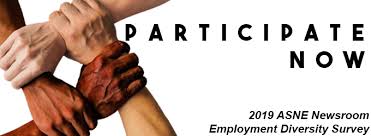
Editors Seeking to Reinvent Diversity Survey
After years of frustrating results, the organization for print and online news editors is seeking to reinvent its annual newsroom diversity survey, according to Michael Days (pictured below), president of the News Leaders Association, and Katrice Hardy, NLA’s diversity chair.
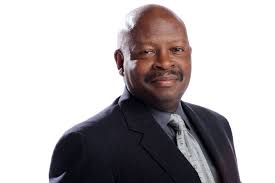 The News Leaders Association combines the American Society of News Editors and Associated Press Managing Editors.
The News Leaders Association combines the American Society of News Editors and Associated Press Managing Editors.
“We’re thinking through . . . how to freshen it up for the most impact,” Days told Journal-isms by telephone on Tuesday. He is vice president of diversity and inclusion at the Philadelphia Inquirer.
He tweeted Tuesday, “We want the NLA Diversity Survey to be more impactful, more focused on shepherding change going forward. Stay tuned.”
Days spoke after a March 6 story from the Poynter Institute began circulating Tuesday. It included the sentence, “But the 40-year-old ASNE diversity census is being scrapped.”
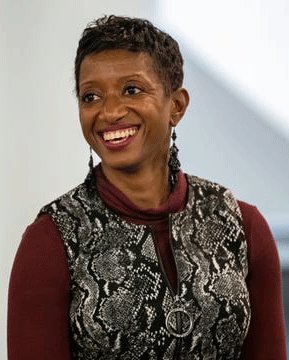 “No one’s saying that. We just want teeth behind it,” Hardy (pictured), executive editor of the Indianapolis Star, said by telephone Wednesday.
“No one’s saying that. We just want teeth behind it,” Hardy (pictured), executive editor of the Indianapolis Star, said by telephone Wednesday.
Participation in the 2019 survey was only 22.8 percent, though up from a historic low of 17 percent in 2018. “Overall, people of color represent 21.9 percent of the salaried workforce among newsrooms that responded,” ASNE said at the time.
“We keep putting out the same results,” Hardy said.
Hardy said the group is seeking ways to help editors transform their newsrooms, and thinking through “how to focus on news leaders and work on the culture.”
Perhaps offer a toolkit for top managers and measure progress only in top- and middle management, she said. Some editors found the survey time-consuming, Hardy said. On diversity, the goal will be to have top editors “live it, breathe it, owning it, and making an impact.
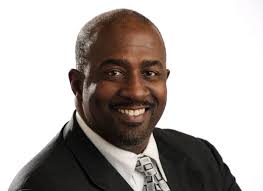 Meanwhile, Gregory L. Moore (pictured), former editor of the Denver Post, raised the diversity issue Tuesday on “Democracy Now!” in a discussion of the coronavirus’ impact on local journalism.
Meanwhile, Gregory L. Moore (pictured), former editor of the Denver Post, raised the diversity issue Tuesday on “Democracy Now!” in a discussion of the coronavirus’ impact on local journalism.
“Yeah, that’s the first thing that goes, is diversity,” Moore said. “A lot of times, those people tend to be the last ones hired and the first ones to be laid off. And so, one of the things you begin to see is the whitening of the media. And in particular, I’m really concerned about some of the new digital startups. I mean, when you go and look at many of these digital startups, very few people of color are a part of that system.
“And I think that’s the number one thing as we look to the future of media in this country, whatever that is going to become, is to get a recommitment that it should be for everyone. And we need people of color at all levels to be able to participate, tell the stories that need to be told the right way. Right now that’s suffering.”
- Ron Nixon, IRE Journal, Investigative Reporters & Editors: Publication without representation
Facebook users: “Like” “Richard Prince’s Journal-isms” on Facebook.
Follow Richard Prince on Twitter @princeeditor
Richard Prince’s Journal-isms originates from Washington. It began in print before most of us knew what the internet was, and it would like to be referred to as a “column.” Any views expressed in the column are those of the person or organization quoted and not those of any other entity. Send tips, comments and concerns to Richard Prince at journal-isms-owner@yahoogroups.com
View previous columns (after Feb. 13, 2016).
- Diversity’s Greatest Hits, 2018 (Jan. 4, 2019)
- Book Notes: Is Taking a Knee Really All That? (Dec. 20, 2018)
- Book Notes: Challenging ’45’ and Proudly Telling the Story (Dec. 18, 2018)
- Book Notes: Get Down With the Legends! (Dec. 11, 2018)
- Journalist Richard Prince w/Joe Madison (Sirius XM, April 18, 2018) (podcast)
- Richard Prince (journalist) (Wikipedia entry)
- February 2018 Podcast: Richard “Dick” Prince on the need for newsroom diversity (Gabriel Greschler, Student Press Law Center, Feb. 26, 2018)
- Diversity’s Greatest Hits, 2017 — Where Will They Take Us in the Year Ahead?
- Book Notes: Best Sellers, Uncovered Treasures, Overlooked History (Dec. 19, 2017)
- An advocate for diversity in the media is still pressing for representation, (Courtland Milloy, Washington Post, Nov. 28, 2017)
- Morgan Global Journalism Review: Journal-isms Journeys On (Aug. 31, 2017)
- Diversity’s Greatest Hits, 2016
- Book Notes: 16 Writers Dish About ‘Chelle,’ the First Lady
- Book Notes: From Coretta to Barack, and in Search of the Godfather
- Journal-isms’ Richard Prince Wants Your Ideas (FishbowlDC, Feb. 26, 2016)
- “JOURNAL-ISMS” IS LATEST TO BEAR BRUNT OF INDUSTRY’S ECONOMIC WOES (Feb. 19, 2016)
- Richard Prince with Charlayne Hunter-Gault,“PBS NewsHour,” “What stagnant diversity means for America’s newsrooms” (Dec. 15, 2015)
- Book Notes: Journalists Follow Their Passions
- Book Notes: Journalists Who Rocked Their World
- Book Notes: Hands Up! Read This!
- Book Notes: New Cosby Bio Looks Like a Best-Seller
- Journo-diversity advocate turns attention to Ezra Klein project (Erik Wemple, Washington Post, March 5, 2014)
